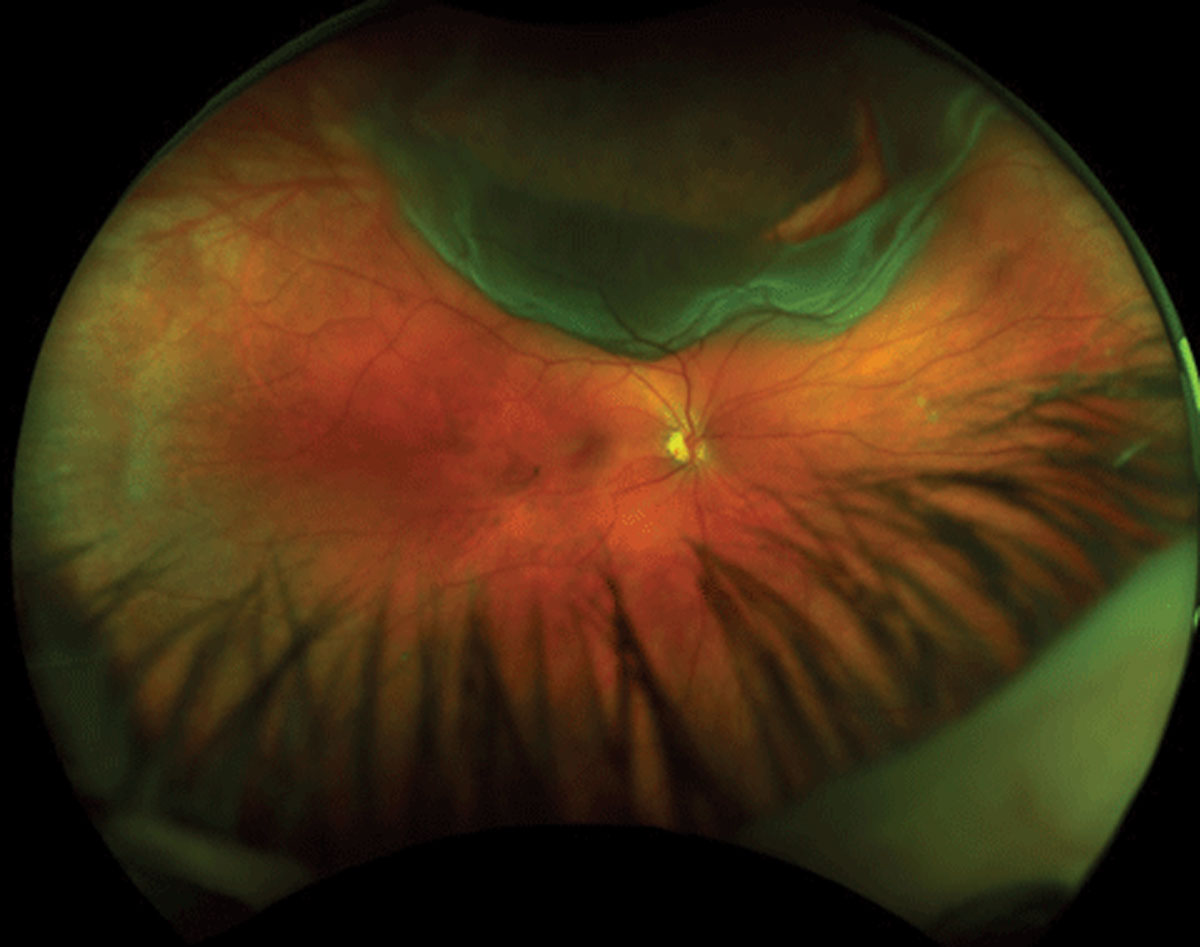 |
| This study found retinal detachment to be more common in those living in deprivation. Photo: Richard Mangan, OD. Click image to enlarge. |
Many studies have explored the impact of socioeconomic deprivation in the most common acquired causes of visual loss in adults, including cataract, diabetic eye disease, glaucoma, AMD, ocular trauma and microbial keratitis. Recently, researchers in the United Kingdom decided to pinpoint the deleterious effect of socioeconomic deprivation on surgical success and visual outcomes following macula-on rhegmatogenous retinal detachment (RRD) repair; they found an increased retinal redetachment rate in more deprived patients and in a younger cohort of South Asian patients compared with those of Caucasian ethnicity.
The study was a retrospective consecutive case series of 568 patients attending Birmingham and Midlands Eye Centre from January 2017 to 2020. It used a measure called the index of multiple deprivation (IMD) to determine deprivation status and split the patients into two groups: more deprived (IMD-A) and less deprived (IMD-B). The IMD observes deprivation of income, employment, education, skills and training, health, housing and services and living environment. The two largest subgroups of ethnicities in the United Kingdom were compared, Caucasian and South Asian patients.
Although the study’s surgical success of RRD repair was comparable to other large case series, the researchers found that deprivation was associated with a lower success rate, as the redetachment rate at six months was higher in the most deprived (21 cases, 9.6%) compared with the less deprived (13 cases, 4.9%) individuals. IMD-A redetached significantly more than IMD-B (11.2% vs 6.0%, respectively). The more deprived patients were more likely to have a scleral buckle as well as oil or a long-acting tamponade.
The researchers hypothesized that this difference may be attributed to postoperative factors such as posturing compliance. Patients in the deprived groups might be more likely to have less social and/or occupational support to take sufficient sick leave to ensure an adequate postoperative recovery.
The study found no statistical significance between Caucasian and South Asian redetachment rates (9.1% and 5.6%, respectively) but noted that the South Asian median age of onset was significantly lower at 49 compared with Caucasian patients at 57. It did not detect any differences in final visual outcomes across groups.
“This study has shown there is a causal relationship between social deprivation and an increased risk for surgical failure in RRD repair; however, a prospective study is required to determine a possible causative effect,” the researchers concluded. “This study also highlights that health disparities may always persist, especially in specific geographic areas, but an early and increased recognition of its socioeconomic impact may urge policymakers to provide more resources to the most vulnerable groups and improve their quality of life.”
Moussa G, Kalogeropoulos D, Wai Ch’ng S, et al. Effect of deprivation and ethnicity on primary macula-on retinal detachment repair success rate and clinical outcomes: a study of 568 patients. PLoS One. November 9, 2021. [Epub ahead of print]. |

